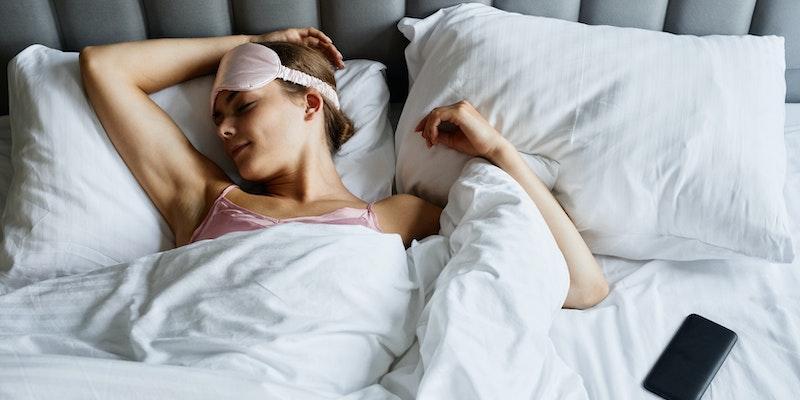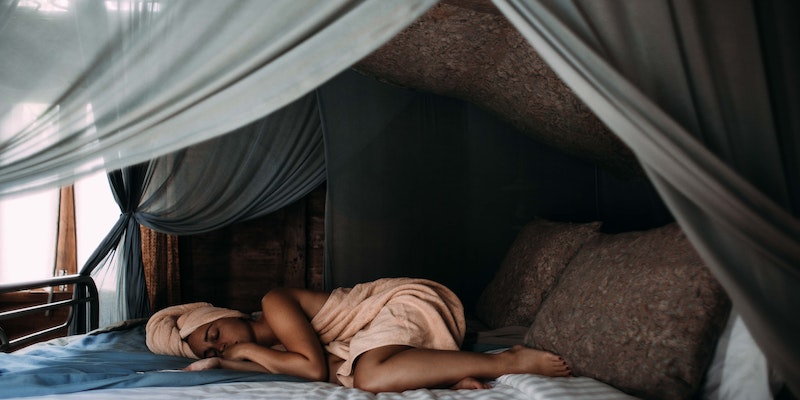Cultivating Better Sleep: 10 Healthy Habits
Oct 11, 2023 By Madison Evans
Sleep, an essential element of well-being, is often compromised in today's fast-paced world. We underestimate its value, distracted by daily chores, digital screens, and tight schedules. However, like diet and exercise, sleep also demands respect and understanding. This brings us to the topic of good sleep hygiene habits.
What is Sleep Hygiene?
Sleep hygiene refers to the practices, habits, and environmental factors conducive to consistently sleeping well. Maintaining good sleep hygiene habits can improve mental and physical health, mood, and cognitive function and boost daily productivity.
Conversely, bad hygiene habits, especially concerning sleep, can lead to disrupted rest, insomnia, and various health complications, including cardiovascular diseases, depression, and impaired immune function.
1. Regular Sleep Schedule
Understanding the dynamics of a regular sleep schedule involves delving into our body’s intrinsic rhythm - the circadian rhythm. This biological clock, governed by the hypothalamus, governs our wakefulness and sleepiness by responding to light and dark. When we commit ourselves to a strict regimen of sleeping and waking simultaneously every day, we bolster this natural mechanism. It's not just about quantity but quality; when our sleep schedule is sporadic, we might hit the sheets for eight hours but still wake up feeling fatigued.
This is because irregularity disrupts the circadian rhythm, undermining the therapeutic quality of sleep. Consistency in your sleep-wake times not only streamlines your circadian rhythm but also enhances the quality of your sleep, making it one of the most crucial good sleep hygiene habits.
2. Create a Sleep-Conducive Environment

A sanctuary dedicated to slumber, your bedroom should be meticulously crafted to cater to every sleep need. The environment plays a discreet yet profound role in determining how quickly we fall asleep, how deeply we slumber, and how we transition through the sleep cycles. Dark, cool, and quiet are often hailed as the trinity of ideal sleep conditions. A cool environment facilitates the natural drop in our body's internal temperature, a prerequisite for sleep.
The absence of light fosters melatonin production, while a quiet ambiance minimizes the potential for abrupt awakenings. Investing in blackout curtains, considering a quality mattress, and perhaps exploring white noise machines or earplugs can make your bedroom a haven that silently whispers an invitation to restful sleep each night.
3. Limit Screen Time Before Bed
Navigating through the intricate relationship between screen time and sleep unveils the influence of blue light on our sleep-wake cycle. The blue light, emitted copiously from our devices, masquerades as daylight in the eyes of our biological clock, suppressing melatonin production and effectively tricking our brain into a state of alert wakefulness. This conundrum, embedded in one of our digital age's most pervasive bad hygiene habits, is an intricate hurdle to sound sleep.
Enforcing an electronic curfew, shifting to warmer screen tones, or utilizing blue light glasses in the evenings can mitigate this artificial daylight effect, safeguarding our precious melatonin production and fostering a smoother transition into the arms of sleep.
4. Be Mindful of Your Diet
Embarking on the journey of understanding diet and sleep, it becomes evident that what we consume can be an ally or an adversary to our slumber. Large, spicy, or acidic meals before bed can trigger indigestion or acid reflux, catalyzing discomfort and potential awakenings throughout the night. Similarly, caffeine, with its potent stimulatory effect, can linger in your system for hours, subtly sabotaging your sleep onset and architecture if consumed too close to bedtime. Alcohol, while seemingly a sleep inducer, can disrupt your sleep cycle, fostering fragmented sleep and early-morning awakenings.
Opting for a light, easily digestible snack before bed, being mindful of caffeine cutoff times, and approaching alcohol with caution transform your diet into a strategic partner in your pursuit of restful nights.
5. Incorporate Physical Activity
Drawing the lines between physical activity and sleep, the compelling evidence underscoring the potency of exercise as a pillar of good sleep hygiene habits comes to light. Regular physical activity enhances sleep quality and boosts its duration, fostering a deeper, more restorative slumber. However, timing is paramount - vigorous exercise too close to bedtime can ignite a surge of energy, courtesy of the endorphin release, becoming a stumbling block to tranquil sleep onset.
Thus, moderating exercise type and mindfully positioning it in your daily routine – ideally in the morning or afternoon – can elegantly weave physical activity into your tapestry of healthy sleep hygiene habits.
6. Develop a Pre-Sleep Ritual

Embarking upon the evening, crafting a pre-sleep ritual can become a transformative endeavor in enhancing one's sleep. The essence of this practice is deeply rooted in signaling psychological and physiological cues that beckon sleep. Calming activities such as reading, soft music, or gentle stretches serve as a mediator, guiding the transition from the day's residual hustle to a serene, sleep-ready state.
Beyond their apparent tranquility, these activities serve a dual purpose: they provide mental decoupling from any stressors or stimulants of the day and foster physiological priming for sleep by initiating the slowdown of bodily functions. By establishing a reliable, calming pre-sleep ritual, we construct a bridge from wakefulness to sleep, gently guiding the body and mind toward a restful night.
7. Be Wary of Napping
While naps harbor the potential to rejuvenate our alertness and mitigate the impacts of sleep deprivation, tread cautiously. Napping can intrude upon the forthcoming night's sleep, particularly when extended or too close to bedtime. Keeping naps brief, ideally confined to 20-30 minutes, and positioning them earlier ensures they provide a refreshing pause without encroaching on nocturnal slumbers. A mindful approach to napping thus becomes integral to preserving the sanctity of our nightly rest.
8. Evaluate Your Sleep Posture
Your mattress and pillows should cater to your sleep posture, offering optimal support to the spine, neck, and other joints. Different sleeping positions may necessitate varying levels of support: side sleepers often benefit from additional neck and spine support, while back sleepers might require something a bit more balanced. Ensuring your sleep environment adheres to your physical needs minimizes the potential for pain-induced awakenings and fosters a continuity of sleep that enhances its therapeutic properties.
9. Manage Worries
As the day dims and the night unveils, an unburdening of our mental cargo becomes essential in preparing for rest. The to-dos, the what-ifs, and reflections often burgeon as we attempt to settle, erecting barriers to tranquil sleep. Practicing externalizing these thoughts, perhaps through journaling or a gentle mental walkthrough, can provide a sense of closure and containment, effectively safeguarding your sleep from the tendrils of persistent thoughts.
10. Know When to Seek Professional Help
Sleep disorders, such as insomnia or sleep apnea, may veil themselves beneath the guise of mere sleep difficulties. Recognition and acceptance of this possibility become the first steps toward seeking professional assistance. Engaging with a healthcare professional or a sleep specialist can unveil obscured conditions, providing a pathway toward targeted interventions and support.
On this page
What is Sleep Hygiene? 1. Regular Sleep Schedule 2. Create a Sleep-Conducive Environment 3. Limit Screen Time Before Bed 4. Be Mindful of Your Diet 5. Incorporate Physical Activity 6. Develop a Pre-Sleep Ritual 7. Be Wary of Napping 8. Evaluate Your Sleep Posture 9. Manage Worries 10. Know When to Seek Professional Help
Reason Improving Sleep Can Prevent Migraine Attacks

A Comprehensive Guide to Dealing With a Pinched Nerve

Freedom from Shadows: A Complete Guide to Lightening Dark Armpits

What are The Three Levels of Autism

Buffalo Meat: Evaluating Its Health Contributions

Is It Safe To Have A Bigger Baby? Gaining Weight as a Baby

What is Black Tongue

How To Motivate Yourself For New Exercise Routine: Tips For All

A Manual to Deal With Psychological Projection

Cultivating Better Sleep: 10 Healthy Habits

Understanding 5 Different Pathways To Recovery
